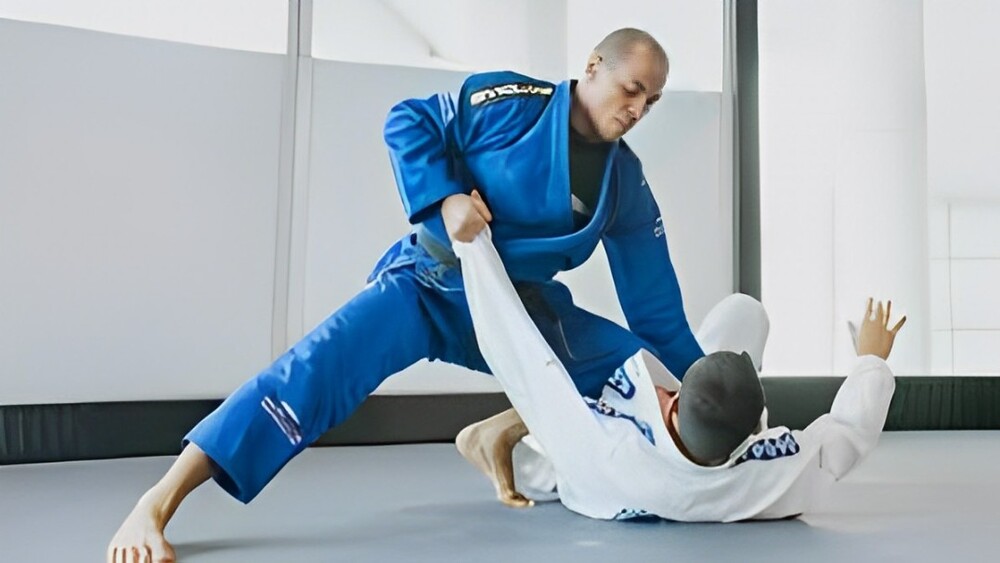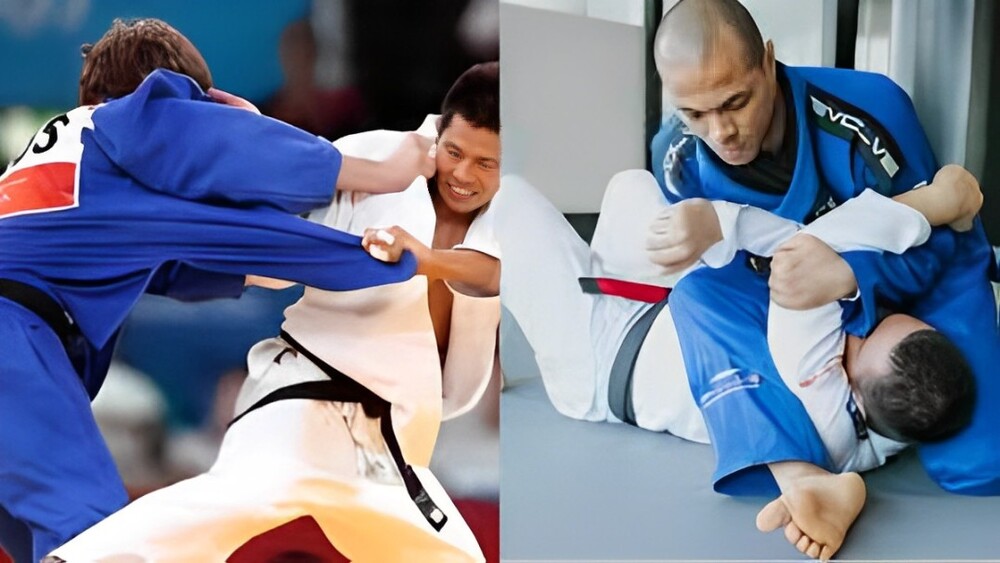Mixed Martial Arts (MMA) is a dynamic combat sport that combines various martial arts techniques, allowing fighters to be versatile and adaptable. MMA athletes typically train in multiple fighting styles to develop well-rounded skill sets.
Understanding these styles is essential to appreciate the strategies and tactics involved in MMA fights. Here’s an overview of some of the most prevalent MMA Fighting Styles:
1. Brazilian Jiu-Jitsu (BJJ)

Brazilian Jiu-Jitsu is one of the foundational styles in MMA, focusing primarily on ground fighting and submission grappling. BJJ allows a smaller, weaker fighter to defeat a larger, stronger opponent by applying joint locks, chokeholds, and controlling positions. It’s highly effective in MMA because most fights eventually go to the ground, where BJJ practitioners excel in managing their opponents.
Key Techniques:
- Guard Position: A defensive position where the fighter on their back controls the opponent from the bottom.
- Submissions: Joint locks (like armbars and leg locks) and chokeholds (such as rear-naked chokes) are designed to force the opponent to submit or “tap out.”
- Famous Fighters: Georges St-Pierre, Demian Maia, and Royce Gracie.
2. Muay Thai
Muay Thai, known as the “Art of Eight Limbs,” is a striking discipline from Thailand that emphasizes punches, kicks, elbows, and knees. This stand-up fighting style is brutal and aggressive, allowing fighters to utilize multiple attack points. Muay Thai also incorporates clinch fighting, which helps control the opponent and set up devastating knee and elbow strikes.
Key Techniques:
- Roundhouse Kicks: Powerful kicks aimed at the legs, body, or head.
- Knee Strikes: Delivered from the clinch, often targeting the opponent’s body or head.
- Elbows: Short-range weapons that can cut open an opponent and cause significant damage.
- Famous Fighters: Anderson Silva, Joanna Jędrzejczyk, and Jose Aldo.
3. Wrestling

Wrestling is one of the most dominant disciplines in MMA, particularly for its ability to dictate where the fight takes place. A strong wrestler can control whether the fight stays standing or goes to the ground through their mastery of takedowns and takedown defense. Wrestlers use their powerful base to control opponents, neutralize attacks, and implement ground-and-pound techniques.
Key Techniques:
- Double-Leg Takedown: A fundamental move where the fighter tackles their opponent by grabbing both legs and driving them to the mat.
- Ground-and-Pound: Wrestlers use strikes to dominate their opponents from top positions once on the ground.
- Takedown Defense: A wrestler’s ability to stay on their feet by defending against an opponent’s attempts to take them down.
- Famous Fighters: Khabib Nurmagomedov, Daniel Cormier, and Jon Jones.
4. Boxing

Boxing is a cornerstone of MMA’s striking game. With its focus on punches, head movement, and footwork, boxing provides fighters with the tools to control the fight at a distance and counter opponents. In MMA, good boxers use jabs, hooks, and crosses to land significant strikes while avoiding takedowns through superior movement.
Key Techniques:
- Jab: A quick, straight punch often used to gauge distance and set up more powerful strikes.
- Counterpunching: Timing punches to land after an opponent attacks, exploiting openings.
- Head Movement: Used to dodge strikes and stay elusive in the stand-up exchanges.
- Famous Fighters: Conor McGregor, Stipe Miocic, and Dustin Poirier.
5. Kickboxing

Kickboxing, similar to Muay Thai, emphasizes striking techniques but tends to focus more on kicks and punches without using elbows and knees. Kickboxers are known for their precision, movement, and combinations of strikes. The ability to throw powerful kicks and punches with a fluid transition between the two is a significant advantage in MMA.
Key Techniques:
- Leg Kicks: Designed to weaken an opponent’s mobility by targeting their thighs and calves.
- Combination Striking: Mixing punches and kicks rapidly to overwhelm an opponent.
- Switch Kicks: Quick and deceptive kicks that change direction mid-flight.
- Famous Fighters: Israel Adesanya, Alistair Overeem, and Mirko Cro Cop.
6. Judo

Judo is less common in MMA than other styles but is effective when utilized correctly. It focuses on throws, trips, and submissions, particularly in clinch situations. Judokas can use their opponent’s momentum to throw them to the ground, where they can transition into submissions or dominant positions.
Key Techniques:
- Hip Toss: A throw using leverage from the hips to flip opponents onto their backs.
- Sweeps: Tripping the opponent’s legs to knock them off balance.
- Submission Transitions: Moving seamlessly from throws into submission holds.
- Famous Fighters: Ronda Rousey, Karo Parisyan, and Yoshihiro Akiyama.
Faqs About MMA Fighting Styles
What is the most effective fighting style in MMA?
There is no single “most effective” style, as success in MMA depends on how well a fighter can blend different techniques. However, wrestling, Brazilian Jiu-Jitsu, and Muay Thai are often regarded as the core styles of the sport.
How important is grappling in MMA?
Grappling is crucial in MMA because many fights go to the ground. A fighter with good grappling skills, such as wrestling or Brazilian Jiu-Jitsu, can control their opponent, work for submissions, or land strikes from dominant positions.
Can a fighter succeed in MMA with just one fighting style?
It is likely for a modern MMA fighter to succeed with more than one fighting style. MMA requires versatility, and fighters must be proficient in multiple disciplines to compete at the highest level.
Is striking or grappling more important in MMA?
Both are equally important. Striking allows fighters to win in the stand-up exchanges while grappling is essential for controlling the ground game. Successful fighters are usually skilled in both.
What fighting styles are best for beginners?
Beginners often start with wrestling or Brazilian Jiu-Jitsu for grappling and Muay Thai or boxing for striking. These styles cover the fundamental aspects of both ground fighting and striking.
Conclusion
MMA is a sport of adaptability and strategy, where fighters must master multiple disciplines to be competitive. Whether focusing on ground control with Brazilian Jiu-Jitsu, dominating the stand-up game with Muay Thai or boxing, or controlling the fight’s tempo through wrestling, MMA athletes blend these styles into a personalized approach.
Each fighting style has strengths and weaknesses, and understanding them gives fans a deeper appreciation of the sport’s complexity and the athletes’ abilities.



3 Comments
I consider something truly special in this site.
I am not really good with English but I find this very leisurely to read .
Pingback: Is Wrestling a Martial Art? History, Techniques & Modern Relevance Explained - Sports News and Views